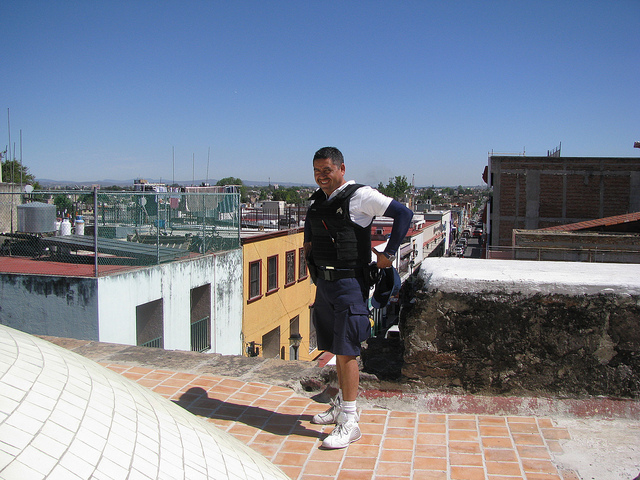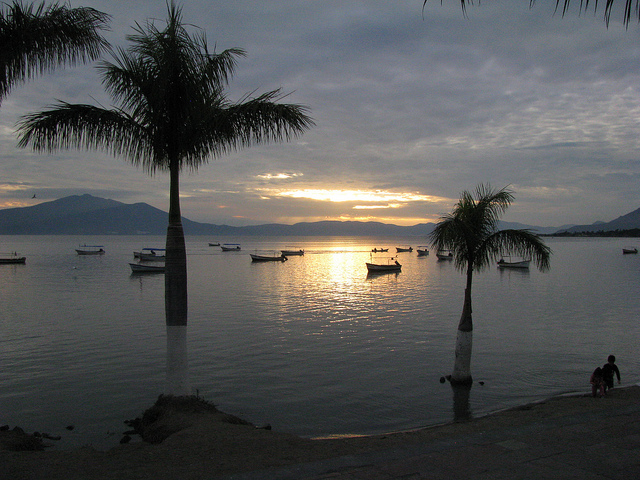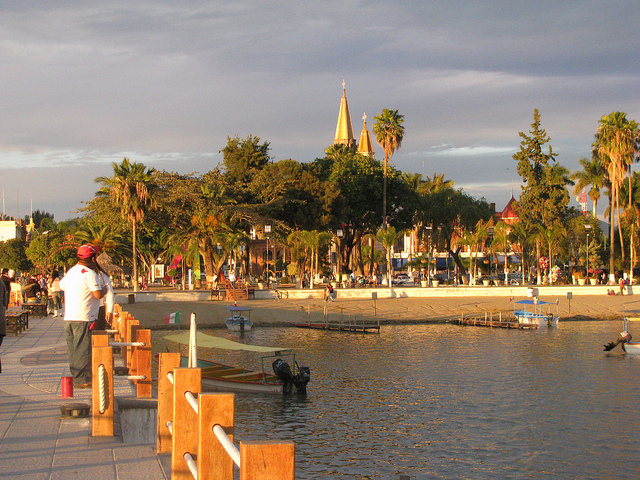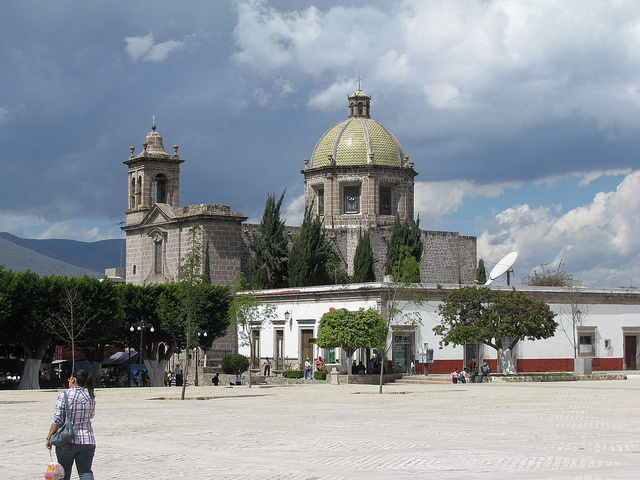On this sunny Monday morning I got up early to download my pictures from my exciting three-day weekend in Guanajuato. I also had to get ready for my first language class at the Guadalajara Language Center, located in Guadalajara’s Tlaquepaque district, which was literally less than a minute away from the family that I had been staying with.
My class was to start at 9 am and my co-students started arriving one by one: there was Michael, in his early 20s, a computer expert from San Diego, and Jorge (or rather George), a retired university professor in his late 1970s from the west coast. Our local teacher Miguel had also arrived. We spent the next two hours dealing with rather complicated grammatical subjects such as the subjuntivo, the differences between the use of the imperfecto and the indefinido, contrasting the use of por and para and studying a variety of local idioms. George’s language skills were extremely advanced – he even knew some of the local slang that only native speakers were familiar with. Michael’s knowledge was more intermediate while I was somewhere in between.

My teacher Miguel (on the right), and my friends George and Michael – studying hard
Language study travel is one of my favourite types of travel, and I had already studied Spanish and Italian in different places around Cuba, Mexico and Sicily. I was really looking forward to my week of Spanish studies and was enjoying my lessons. At 11 am our first round of lessons finished and I asked the owner of the Guadalajara Language Center where to go for lunch. Wouter, always cheerful and willing to help out, sent me just down the street to get some “sincronizadas”, essentially two flat tortillas with melted cheese, ham, tomatoes and onions. This is a very cheap, yet extremely tasty meal and a favourite of many students at the Guadalajara Language Center.

Sincronizadas – my favourite inexpensive lunch
My lessons were finished now since I had only signed up for two hours of Spanish instruction a day, but most of the other students at the Guadalajara Language Center headed back for two more classes after lunch. A two-hour a day language study ritual works out best for me since I need sufficient time to explore the local destinations. This timetable allows me to study languages while also focussing on my travel writing, my photography and videography.

Several Canadian co-students in front of the Guadalajara Language Center
After lunch I had to take the local bus to Tonalá, another neighbourhood of Guadalajara in the east end. The ride from Tlaquepaque to this district is about a half an hour in a local bus. The one I rode on was rather overcrowded and I just managed to get some standing room right next to the driver. But he dropped me safely off at the Estación Nueva, the city’s main bus terminal, where I went to the ETN bus company office to double-check my reservations for my trip next weekend to the city of Morelia. I had already made the booking in Canada, but something had gone wrong with my confirmation, so I thought it would be better to double-check in person. In Mexico it is still important to double-check on bookings in person as any arrangements made by Internet can not be trusted one hundred percent.

A view of the computer area at the Guadalajara Language Center – with Slimpy the dog…
In the mid-afternoon I decided to check out downtown Guadalajara which took about an hour to reach from Tonalá. Guadalajara, also often called the “Pearl of the West” or the “City of Roses”, is a very large urban centre, and with more than 4 million inhabitants it is Mexico’s second largest city. Guadalajara was first settled by the Spaniards in 1532 and became an important administrative centre. The construction of the cathedral started in 1558 and the University of Guadalajara, one of the oldest in Mexico, was founded in 1791. During the Mexican War of Independence from 1810 to 1821 the city became the location of bitter battles between the insurgents, led by Independence hero Miguel Hidalgo, and Spanish royalist forces.

Guadalajara’s historic cathedral
From the late 1800s onwards, rail lines started to connect the region with the rest of Mexico and the United States. Electrical service was introduced during the same era and the region grew substantially. Starting in the 1930s, Guadalajara experienced another important phase of growth and the city’s population reached one million by 1964.

Interior of the Cathedral of Guadalajara
Guadalajara, Mexico’s second most important city, is the capital of the State of Jalisco, one of the most developed regions in the country with a comparably advanced standard of living. It is home to a diversified base of industries that include a wide range of manufacturing, including food and beverages, automotive parts, electronics, footwear, textiles, furniture, steel and pharmaceuticals. Its electronics production has earned the city the nickname “Silicon Valley of the Mexico” and has attracted companies such as IBM, Hewlett Packard, Siemens, General Electric, Jabil Circuit and many others. The city has become a magnet for a lot of foreign investment and the city’s exports increased from less than 4 billion USD in 1995 to more than 14 billion in 2003. I wanted to check out the downtown of this vibrant metropolis in more detail.

Here is the 19th century bandstand on the Plaza de Armas
I exited my bus on the Calle 16 de Septiembre and found myself on the Plaza de Armas, the city’s main square, just south of the Cathedral. The square is anchored by a delicately ornamented bandstand made of French ironwork that was bought by Mexican president Porfirio Diaz in 1885. At the north end of the square is the monumental cathedral which was begun in 1558 and consecrated in 1616. The two asymmetrical towers were built in the mid 1800s after two earthquakes in 1the 700s and 1800s had destroyed the original façade and towers. A range of architectural styles, from Gothic to Baroque, Moorish and Neoclassical are represented in this building.

One of the memorials that is part of the “Rotunda de los Hombres Ilustres”




